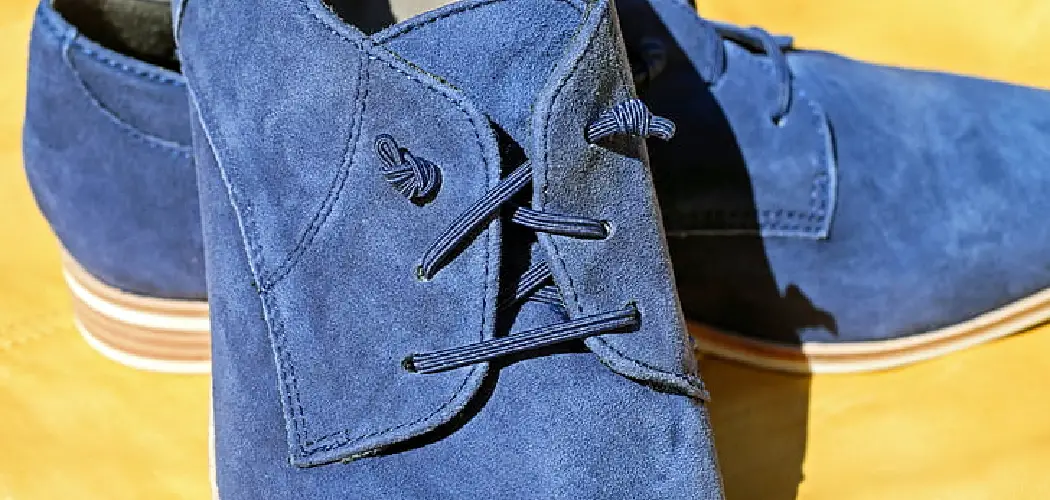Do you hate tying your shoes? Are you looking for a convenient way to put on and take off your shoes without having to worry about double knots and laces coming undone? Look no further! No elastic tie laces are the answer. They’re a great way to make putting on your shoes faster and easier. Not only do they offer convenience, but also a style!
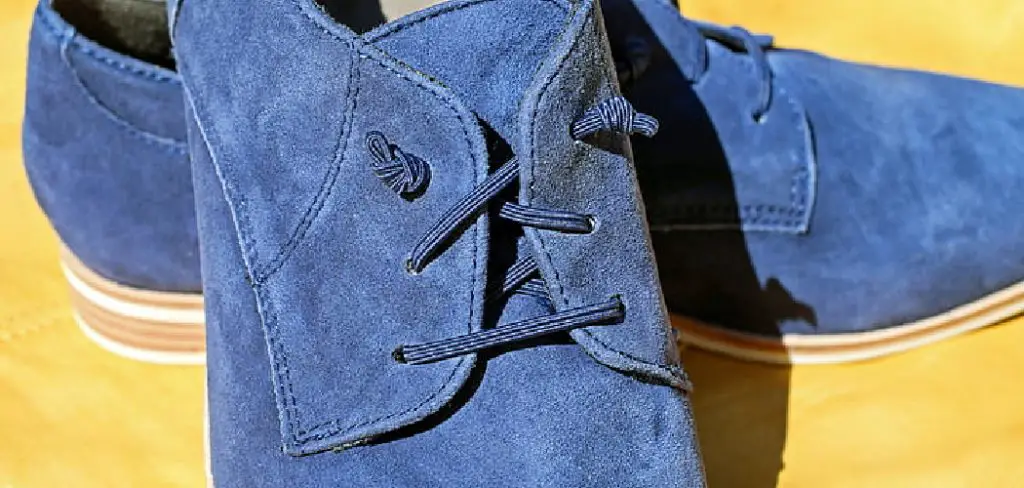
Whether you’re an athlete, a fashionista, or just someone who wants their shoe game to be more effortless – no-tie elastic laces provide versatility that helps you look good (and stay active) in any situation. Read on to learn how to use no tie laces and why they’re the perfect choice for anyone hoping to transform their footwear experience into one of freedom, comfort, and fun!
Summary: No tie laces are a great alternative to traditional shoelaces that can be time-consuming to tie and untie. With no tie laces, you can simply slip your shoes on and off, making them perfect for busy individuals who are always on the go. To use no-tie laces, replace your traditional ones with no-tie laces and adjust them to fit your shoes comfortably.
Are Lock Laces Worth It?
Yes, Lock Laces are absolutely worth it. Not only are they super convenient – no more double knots or laces coming undone – but they also offer a level of style and customization that conventional shoes can’t provide. Plus, by swapping out your regular shoelaces for Lock Laces, you’ll be able to put on and take off your shoes faster and with less effort.
That’s something we can all appreciate. Additionally, Lock Laces are elasticized and adjustable, meaning that you can customize the fit of your shoes in a way that conventional laces just can’t match. In short, if you’re looking for an easier, more stylish way to put on and take off your shoes – Lock Laces are definitely worth it.
9 Methods How to Use No Tie Laces
1. Conventional Method
The conventional method of using no-tie laces is to simply thread them through the eyelets of your shoes in the same way that you would thread regular laces. This method is quick and easy, and it will keep your shoes securely laced. If you want to ensure that the laces stay in place and don’t come undone, you can use a pair of locking shoelace clips or aglets to hold them in place.
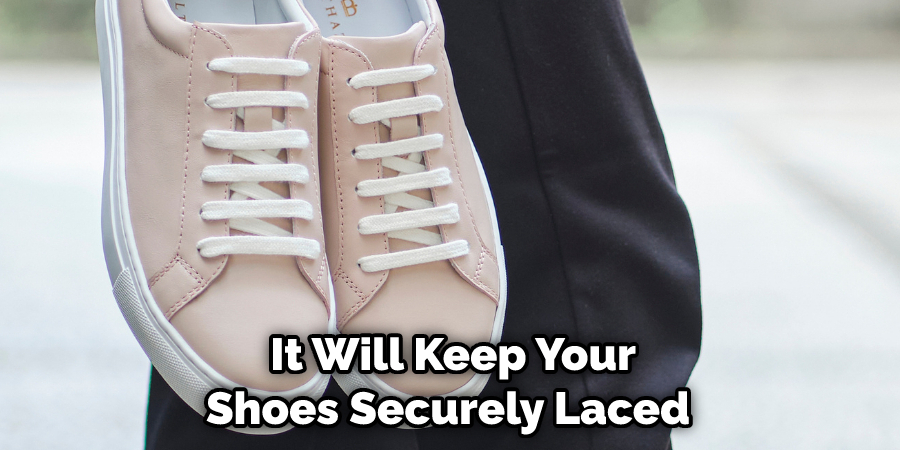
2. Loop Method
The loop method is a slightly more complicated way of using no tie laces, but it can provide a more secure fit. To use this method, you will need to thread the lace through the eyelets in a looping pattern. Once you have done this, you will need to tie the ends of the laces together in a knot. Though it may take a bit of practice to master, this method can provide a more secure fit than the traditional knot.
3. Bar Method
The bar method is another variation of the loop method. To use this method, you will need to thread the lace through the eyelets in a looping pattern. However, instead of tying the ends of the laces together, you will need to pass one end of the lace under the other and then pull it tight.
This will create a bar-like structure that will keep your shoes securely laced. However, it is important to note that the bar method can be difficult to adjust once tied, so it’s best used for shoes you won’t need to take on and off regularly.
4. Figure-Eight Method
The figure-eight method is similar to the bar method, but it creates a more secure fit. To use this method, you will need to thread the lace through the eyelets in a looping pattern. Instead of passing one end of the lace under the other, you will need to pass both ends of the lace over each other and then pull them tight.
This will create a figure-eight-like structure that will keep your shoes securely laced. Try to pull the loops tight so that they are even and secure. This method is especially useful for those who have difficulty tying standard shoelaces or need extra security with their shoes.
5. Basket Weave Method
The basket weave method is another variation of the loop method. To use this method, you will need to thread the lace through the eyelets in a looping pattern. Instead of passing one end of the lace over or under the other, you will need to alternate between passing over and under until you reach the end of the row of eyelets.
This method is often used on shoes with a lot of eyelets, as it creates a more secure fit and helps to evenly distribute the tension across the entire shoe. It also creates a visually interesting pattern that can add some extra flair to your favorite pair of sneakers or dress shoes. To finish the lacing, simply tie off the end in a bow or knot and you’re ready to go!
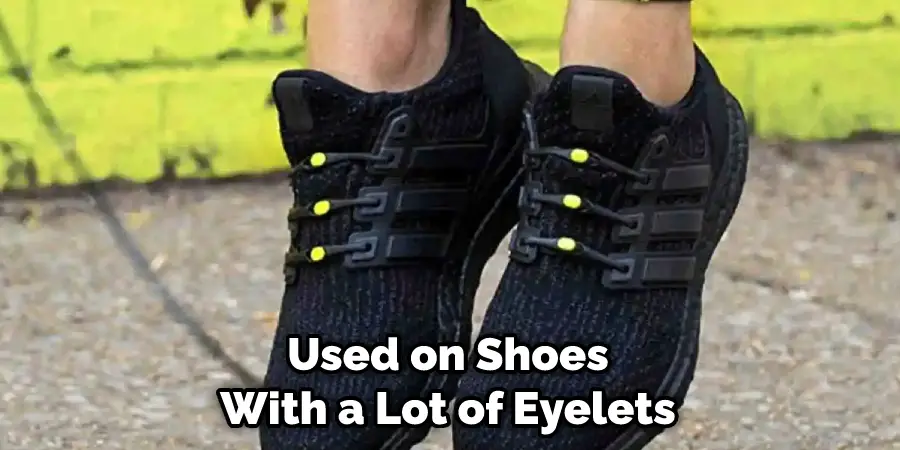
The basket weave lacing method is an easy way to spruce up any shoe with too many eyelets for traditional lacing methods.
6. Ladder Lacing Method
The ladder lacing method is a great way to create a secure fit while using fewer eyelets than the traditional looping or basket weave methods. This method begins in the same way as the loop method, with one end of the lace passed over and under each eyelet.
However, instead of continuing this alternating pattern all the way down, you will skip every other eyelet so that the next pass of your lace creates a “ladder” between the skipped sections. To finish off this technique, simply tie an overhand knot at the end, and you’re all set! The result is an attractive lacing pattern that looks good on any pair of shoes and helps keep them securely fastened.
7. Straight Bar Lacing Method
The straight bar lacing method is an easy way to create a streamlined look on your favorite pair of sneakers or dress shoes. To use this technique, begin by passing one end of the lace through the bottom eyelet and then pass it over and under each eyelet until you reach the top row.
Instead of continuing in an alternating pattern as with most other methods, keep both ends even by always passing them over or under each eyelet. Once you reach the top, simply tie off both ends in a bow or knot and you’re good to go! This method creates a very neat and orderly look that still provides plenty of security while keeping your shoes looking sharp.
8. Heel-Lock Lacing Method
The heel-lock lacing method is a great way to ensure that your shoes stay securely fastened no matter what. To use this technique, begin by passing one end of the lace through the bottom eyelet and then up and down through each eyelet until you reach the top.
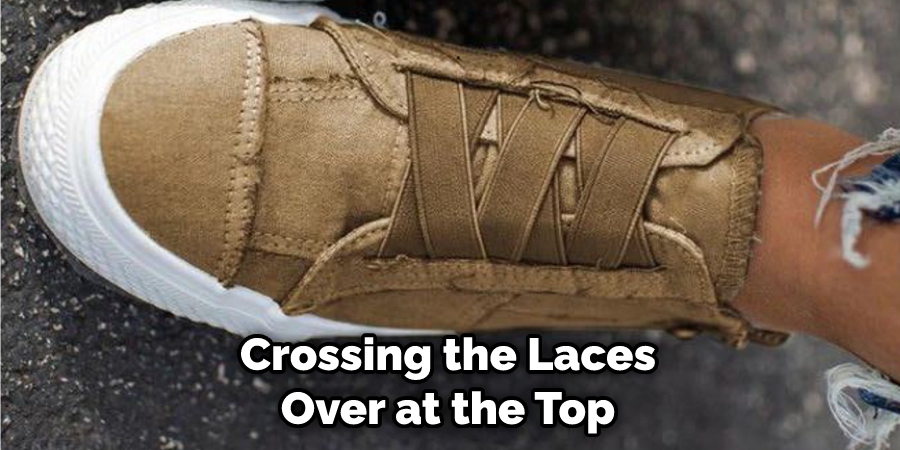
Instead of crossing the laces over at the top, as with most other methods, pass them both through the same right-side eyelet so that they form an X in front. Then, pull both ends tight to lock them into place before tying them off in a bow or knot. This method creates a very secure fit while preventing your feet from slipping around inside your shoes while walking or running.
9. Over Under Lacing Method
The over-under lacing method is one of the simplest and most straightforward ways to lace your shoes. To use this technique, begin by passing one end of the lace through the bottom eyelet and then pass it over or under each eyelet until you reach the top.
Instead of alternating between passes as with other methods, keep both ends even by always passing them over or under each eyelet. Once you reach the top, simply tie off both ends in a bow or knot and you’re all set! This method creates a very neat and orderly look that still provides plenty of security while keeping your shoes looking sharp.
Things to Consider When No Tie Laces
1. Fit:
It is important to make sure that the no-tie laces you choose fit your shoes correctly and provide a comfortable but secure fit. If the laces are too tight or lose, it can cause discomfort and may even cause blisters or other foot problems.
2. Durability:
No tie laces must be of good quality in order to make sure they last a long time and don’t break easily while being used. Consider reading reviews and looking for ones that have been tested extensively before making your purchase.
3. Materials:
Many no-tie laces are made from different materials such as elastic, nylon, or plastic so consider what type will work best for you and your shoes. Elastic is the most popular choice, but if you need something more durable, then you should opt for material like nylon or plastic.
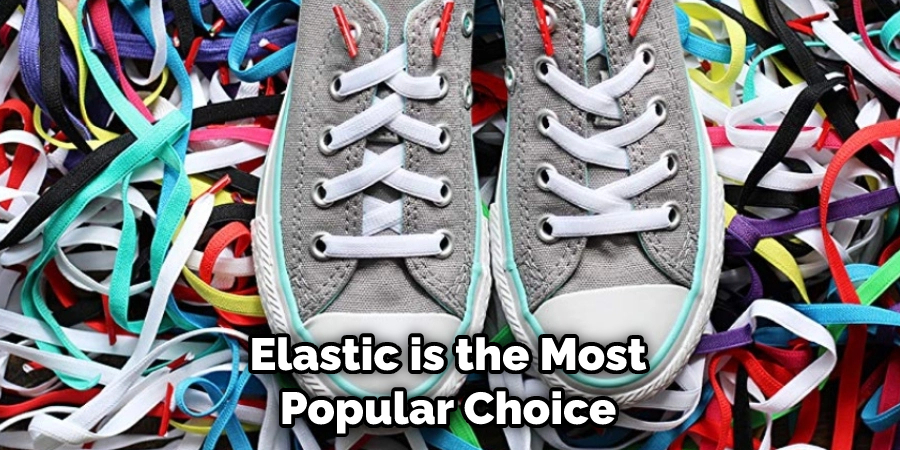
4. Usage:
Think about how much you will be using the laces and if they are going to fit into your lifestyle. If you plan on wearing them regularly, then it’s best to invest in a good quality pair so they can withstand the wear and tear of everyday use.
Conclusion
You can now see how easy it is to use no-tie laces and the many benefits that come along with using them. You don’t have to worry about your shoes coming untied anymore, and you can even save time by not having to tie your shoes every morning. No tie laces are a great invention for anyone who wants to make their life just a little bit easier.
Thanks for reading our blog post on how to use no tie laces! We hope you found it helpful and informative.

